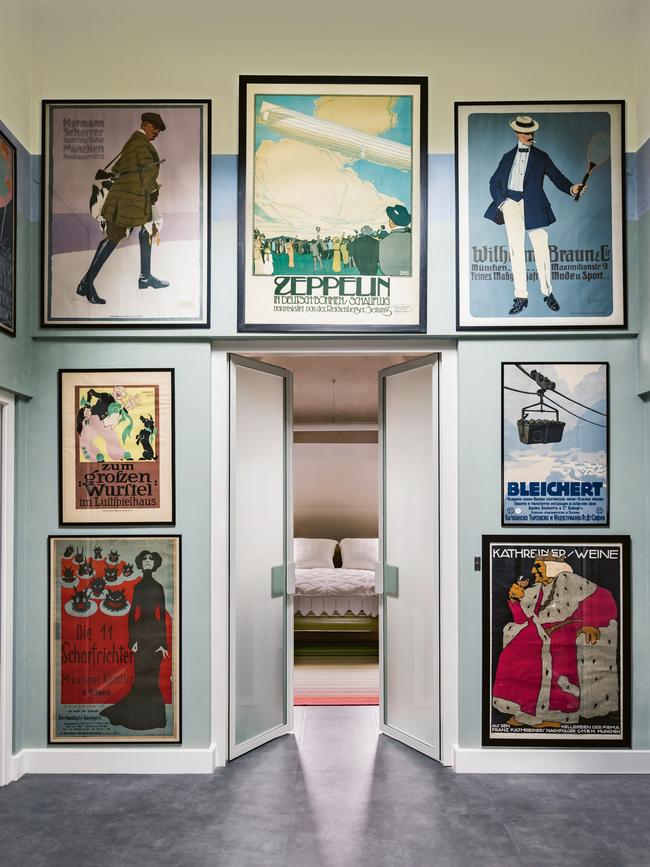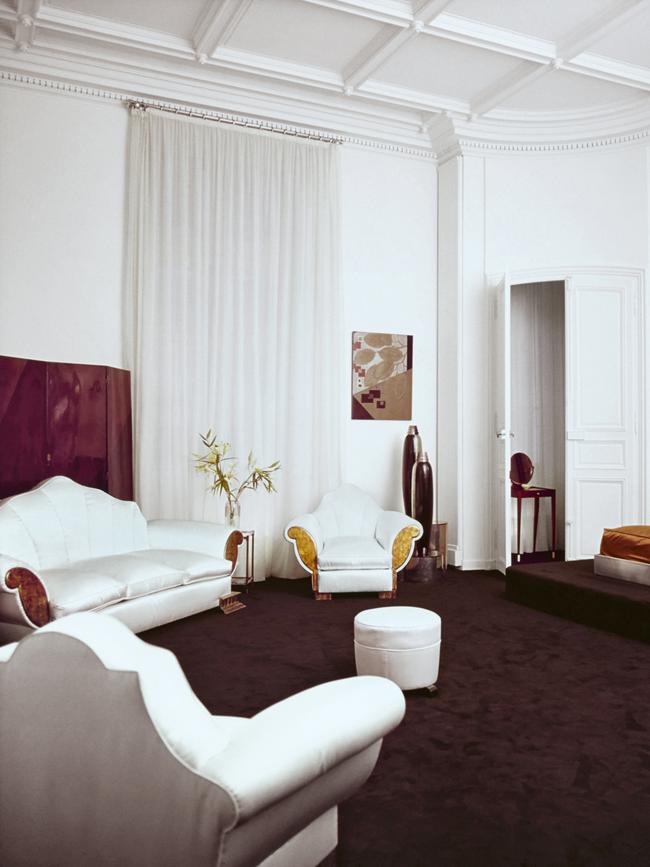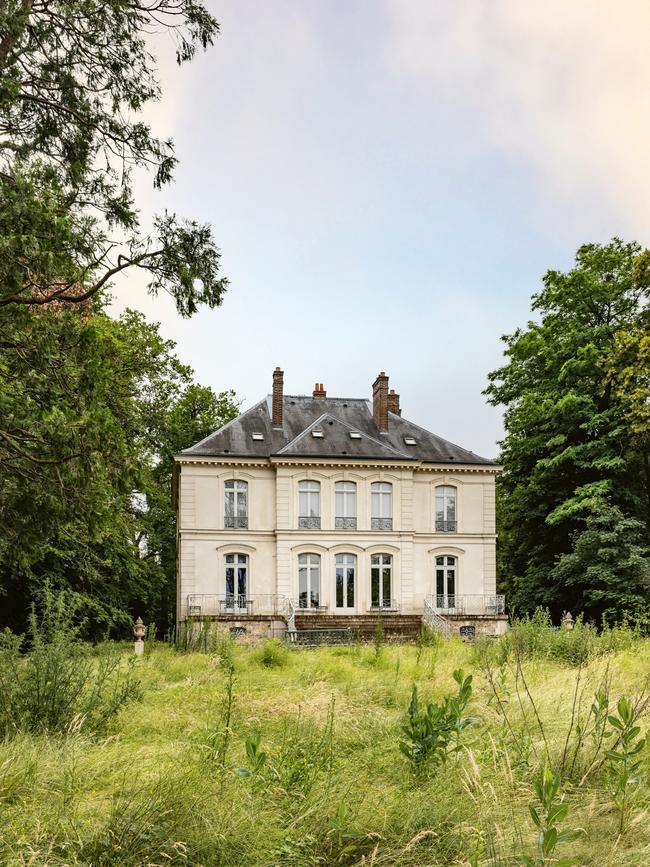Tour the many residences of design chameleon Karl Lagerfeld
From Rococo to avant-garde, the design legend’s homes – including the one in which he spent just a single night – were as eclectic and original as his contributions to fashion.

With his trademark black shades and powdered white ponytail, Karl Lagerfeld was at the heart of the fashion industry for more than half a century, designing up to 14 collections a year well into his eighties. The designer, who died in 2019, was celebrated for the prolific creativity of his tenures at Chloé, Chanel and Fendi, but was less well known for his private passion: interiors.

In September last year, Victoria Beckham held her eponymous label’s spring/summer 2024 show in the salon of one of Lagerfeld’s former homes on Paris’s Left Bank. She is not the only one: Design Miami’s inaugural Paris edition pitched up at the same mansion in Saint-Germain-des-Prés – Hôtel Pozzo di Borgo in rue de l’Université, to be exact – with the art crowd admiring the mise-en-scène of crystal chandeliers and checkerboard marble floors.


Now a new book, Karl Lagerfeld: A Life in Houses, reveals the jaw-dropping decor of 13 of the designer’s residences. “This collection of interiors reflects the desires, circumstances and whims of its creator and reveals his character more fully than any biography,” author Patrick Mauriès writes in his introduction. Mauriès, a long-term Lagerfeld watcher, adds that “Lagerfeld collected interiors in the same way that Don Juan notched up conquests”.

The series of love affairs that took him from Paris to Biarritz, Rome and Hamburg, began in the rue de l’Université in 1963, when Lagerfeld moved with his mother into a second-floor apartment of an 18th-century mansion.
This article is in the March issue of WISH magazine available in Friday’s edition of The Australian

There he placed Art Deco pieces by Émile-Jacques Ruhlmann and André Groult alongside ’60s armchairs by Joe Colombo and tables by Eero Saarinen. It was a mix and match made in heaven, but Lagerfeld rarely became attached to any of the elements of his homes. “It’s collecting that’s fun, not owning,” he once said, and accordingly he painstakingly researched and acquired the perfect pieces. Then, the ensemble completed to his satisfaction, the designer moved on to the next look.
“The most beautiful house is always the next one,” was Lagerfeld’s way of describing his thirst for a new project. And his subsequent home was indeed sublime. In the early 1970s he purchased a flat on Place Saint-Sulpice, on the other side of the Boulevard Saint-Germain, and in 1975, ready for an aesthetic fresh start, sold his Art Deco collection at Drouot auction house. But it was the Hôtel Pozzo di Borgo – the backdrop to Beckham’s floaty frocks – where he moved two years later that marked the most spectacular of Lagerfeld’s transformations.


The 18th-century architecture is unashamedly grand and, to match the majesty of the rooms, he decided to evoke the spirit of Louis XIV and Madame de Pompadour in the decor. He bought Old Master paintings and furniture with gilt Rococo curves and neoclassical lines. This was when the designer began to wear his hair in a ponytail and carry a fan, entertaining guests by candlelight. The extravagant decor spread from wing to wing, the makeover only halted by his debts to the French tax authorities, which led to a sale of much of the Pozzo di Borgo collection at Christie’s in 2000.

Marie Kalt, who wrote the book’s chapters on Lagerfeld’s homes, says the designer’s houses were never private sanctuaries; instead they were stage sets. She worked with Lagerfeld for several months in 2012 when she was editor-in-chief of French Architectural Digest and he guest-edited an issue. “Each time he moved into a house he told himself a story and invented a life to go with that house,” she tells me. “It
was just as if he had been designing a set for a film or play and he was the central character.”

Never one to be typecast, in 1981 the designer moved into an apartment on the 21st floor of Le Roccabella, a Monte Carlo high-rise tower designed by Gio Ponti. There he proceeded to create the aesthetic opposite of his 18th-century fantasia, with avant-garde design by the Memphis Group: Ettore Sottsass’s Carlton bookcase, Michael Graves’s Plaza dressing table and Masanori Umeda’s boxing ring.
Ten years later, when Lagerfeld’s Memphis moment had passed, the collection was sold at Sotheby’s. “He was very much that sort of person who starts building something and then he destroys it and then moves on to something else, which was also the way he treated his relationships,” Kalt says. “He was very, very close to some people, then after a while they were banned and he started a new circle. And on and on and on again.”


The final house in the book, and his last interiors project, is Pavillon des Voisins in Louveciennes, a 19th-century mansion in the countryside near Paris, which he bought in 2009. It can scarcely be called Lagerfeld’s home. The designer spent just a single night and threw one dinner party (for his friends Princess Caroline of Monaco and the event organiser Françoise Dumas) in the house. But it was the most personal of his properties. Here were all the objects he had never sold or discarded: Georg Jensen candlesticks by Johan Rohde, which had followed him from Monaco to Hamburg and Biarritz. Works by Ronan and Erwan Bouroullec and Martin Szekely brought from his Paris apartments. He recreated his teenage bedroom on the first floor and added a reproduction of a painting of Voltaire and Frederick II of Prussia by Adolph von Menzel that had originally inspired his interest in the 18th century. If not a home, then this country house was a testament to the shapeshifting designer’s lifelong curiosity, as well as his inexhaustible genius for reinvention.
Karl Lagerfeld: A Life in Houses by Patrick Mauriès and Marie Kalt (Thames & Hudson).




To join the conversation, please log in. Don't have an account? Register
Join the conversation, you are commenting as Logout